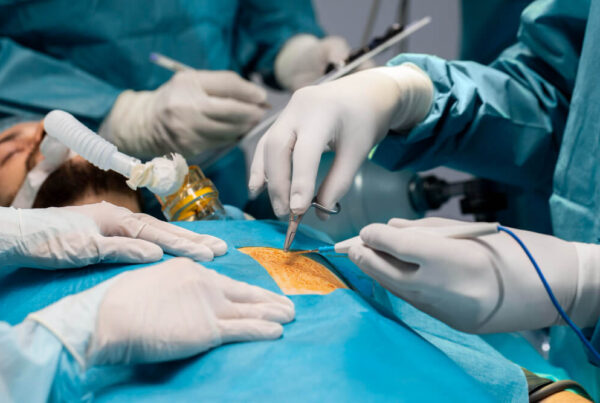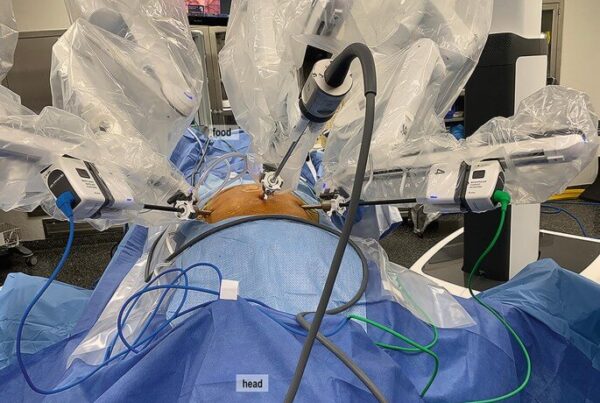 In the world of medical advancements, robotic surgery has become a game-changer, revolutionizing how we approach complex procedures. One of the most impressive applications of robotic technology is in pancreatic surgery. The pancreas, a small but vital organ located deep within the abdomen, plays a key role in digestion and hormone production. When conditions like cancer, chronic pancreatitis, or cysts affect the pancreas, surgery is often required. Robotic pancreatic surgery is proving to be an innovative solution that combines the precision of robotics with the skill of experienced surgeons, offering patients a safer, less invasive alternative to traditional surgery.
In the world of medical advancements, robotic surgery has become a game-changer, revolutionizing how we approach complex procedures. One of the most impressive applications of robotic technology is in pancreatic surgery. The pancreas, a small but vital organ located deep within the abdomen, plays a key role in digestion and hormone production. When conditions like cancer, chronic pancreatitis, or cysts affect the pancreas, surgery is often required. Robotic pancreatic surgery is proving to be an innovative solution that combines the precision of robotics with the skill of experienced surgeons, offering patients a safer, less invasive alternative to traditional surgery.
What is Robotic Pancreatic Surgery?
Robotic pancreatic surgery involves the use of a robotic-assisted surgical system to perform complex operations on the pancreas. The system is controlled by a surgeon from a console, allowing them to manipulate small robotic arms equipped with surgical instruments with great precision. This technology gives surgeons enhanced control, better visualization, and more flexibility in performing delicate procedures on the pancreas.
Unlike traditional open surgery, which requires a large incision, robotic surgery uses smaller incisions. Through these incisions, the robotic instruments are inserted, and the surgeon controls them remotely. The system provides a high-definition, 3D view of the surgical area, offering an unparalleled level of detail that improves accuracy and reduces the risk of complications.
Key Benefits of Robotic Pancreatic Surgery
-
Minimally Invasive Approach
One of the most significant advantages of robotic pancreatic surgery is its minimally invasive nature. Traditional pancreatic surgery involves long incisions that can be painful and require longer recovery times. With robotic surgery, only small incisions are needed, reducing trauma to the body. This means less pain, lower risk of infection, and a shorter hospital stay.
-
Improved Precision
The robotic system provides surgeons with exceptional precision and stability, allowing them to navigate complex anatomical structures with great accuracy. This is particularly important in pancreatic surgery, where the pancreas is situated near other vital organs such as the stomach, liver, and small intestine. Robotic assistance minimizes the risk of damage to surrounding tissues, which is crucial for a successful outcome.
-
Enhanced Visualization
The robotic system offers high-definition, 3D views of the surgical area, which improves the surgeon’s ability to see intricate details. This enhanced visualization allows for better identification of tumors, blood vessels, and other structures, leading to more accurate excisions and a greater likelihood of complete tumor removal in cases of pancreatic cancer.
-
Faster Recovery
Since robotic surgery involves smaller incisions, patients typically experience less pain and discomfort. This leads to faster recovery times, allowing patients to return to their normal activities more quickly. Studies have shown that robotic pancreatic surgery often results in shorter hospital stays and a reduced need for pain management.
-
Reduced Risk of Complications
The precision and control offered by robotic systems contribute to a lower risk of complications, such as bleeding or infections. The ability to make smaller, more accurate incisions also reduces the risk of wound-related issues. As a result, patients are less likely to experience post-surgical complications, leading to better outcomes.
Who Can Benefit from Robotic Pancreatic Surgery?
While robotic surgery offers many benefits, it is not suitable for every patient. Ideal candidates for robotic pancreatic surgery are typically those who are healthy enough for surgery and whose pancreatic condition can be addressed with a minimally invasive approach. Surgeons will assess each patient’s individual case to determine if robotic surgery is the best option. Factors such as the size and location of the tumor, the patient’s overall health, and the presence of other medical conditions will all be considered.
Challenges and Considerations
While the advantages of robotic pancreatic surgery are clear, there are some challenges and considerations. The technology itself is expensive, and not all hospitals or medical centers may have access to the latest robotic systems. Additionally, the surgery requires highly trained and experienced surgeons who are familiar with the robotic system. For patients, the availability of qualified surgeons and centers specializing in robotic pancreatic surgery is an important factor to consider.
Moreover, like any surgery, robotic pancreatic surgery carries some risk of complications, including bleeding, infection, and damage to surrounding organs. However, the reduced risk associated with robotic surgery compared to traditional methods is a significant advantage.
Conclusion
Robotic pancreatic surgery is a groundbreaking advancement in the treatment of pancreatic conditions. By offering a minimally invasive, highly precise alternative to traditional surgery, it provides patients with quicker recovery times, less pain, and a lower risk of complications. As the technology continues to improve, the future of pancreatic surgery looks brighter than ever, offering hope to patients who face challenging pancreatic diseases.
Whether for cancer, chronic pancreatitis, or other pancreatic disorders, robotic surgery is quickly becoming the gold standard for patients seeking the best possible outcomes with minimal disruption to their lives.




